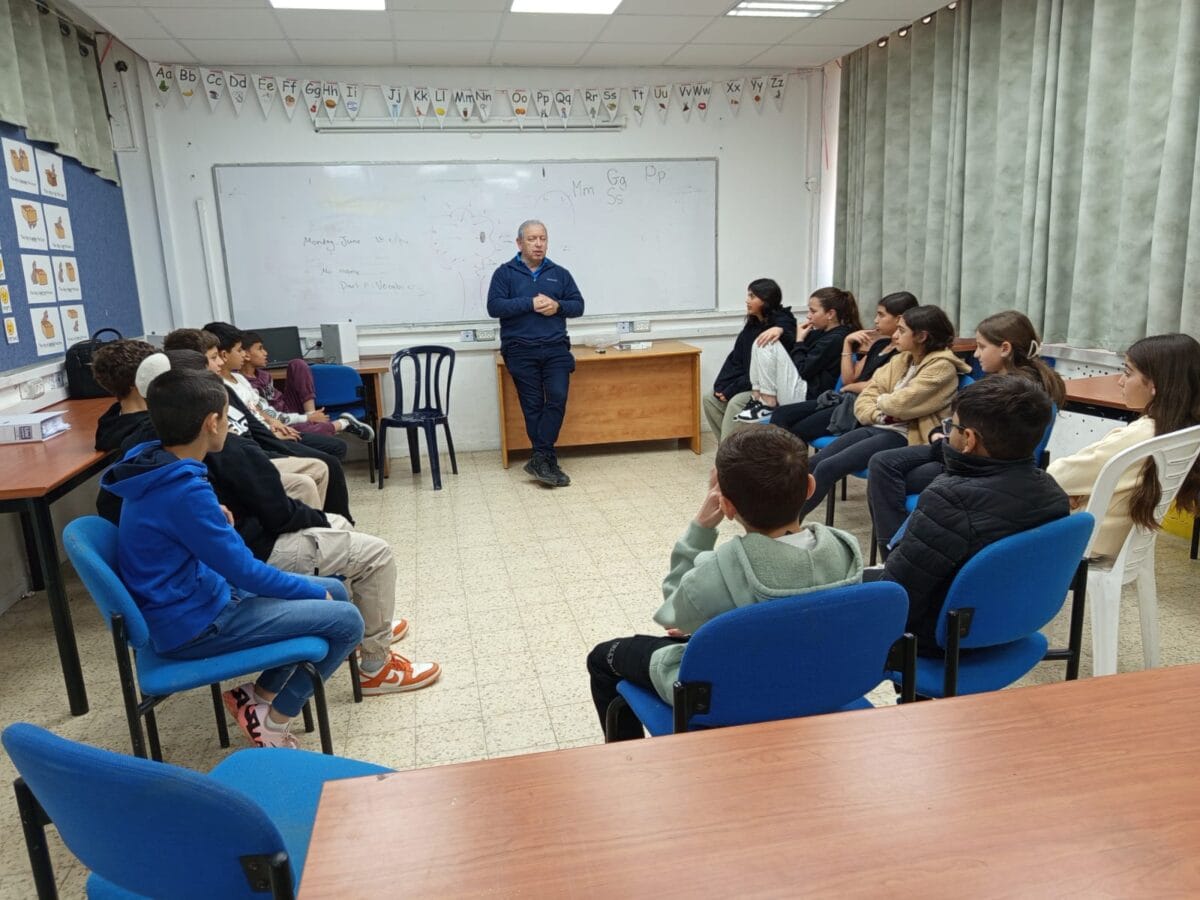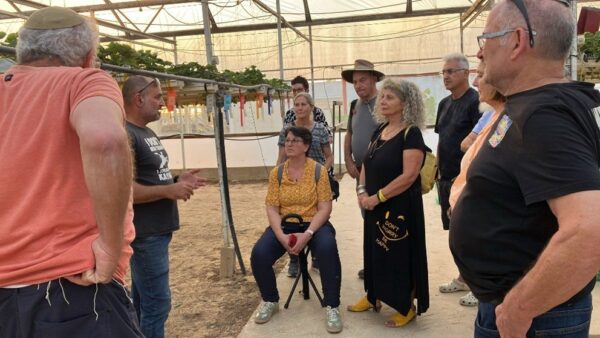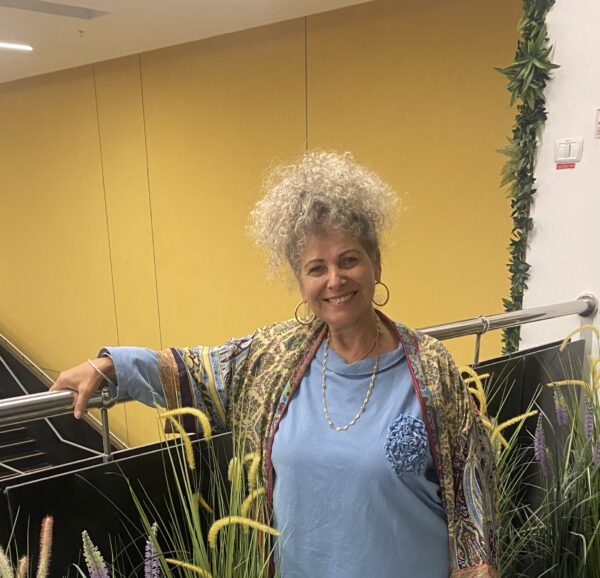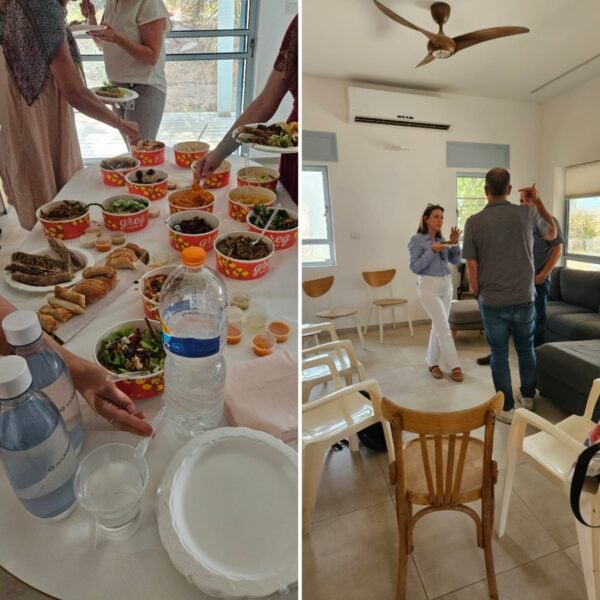When people imagine volunteering, they often picture warm moments of human connection – someone reading to an elder, helping a child with homework, or supporting a family in crisis. But behind many of these visible acts lies something quieter – and arguably even more transformative: volunteers who build systems.
In Elul’s Shnat Sherut 50 Plus program, many volunteers have gone far beyond helping within systems. They’ve created the blueprints, implemented the processes, and laid the foundations for services that will benefit their host communities long after they’ve gone.
Designing from the Ground Up
Take D.L., a professional graphic designer who returned to her craft after years away. Volunteering with the Matnas in Merhavim, she didn’t just design logos and posters – she rebranded the entire organization. Her clean, unified visual identity brought coherence and confidence to local programming, from Tu B’Shvat events to internal presentations. Her contributions made the former designer redundant – not because of competition, but because of quality.
She also developed visual signage systems and curated exhibitions using local photographers’ work – embedding a sense of local pride and aesthetic professionalism into the Matnas’s core identity.
From Digital Chaos to Clarity
D.V., volunteering in the Ofakim Municipality’s Information Systems Department, stepped into a world of paperwork and patchwork processes. By initiating digital systems – forms, workflows, a future-facing municipal app – he started streamlining communication between residents and their city. His dashboard for call tracking now offers real-time insight into what residents need, helping the municipality respond faster and smarter. Without fanfare, he’s modernizing governance from the inside out.
Professionalizing Care Teams
In Adi Negev, O.F., a seasoned social worker, didn’t just join a team – she introduced a new way of working. There had been no regular team meetings, no structured protocols for emergencies, and no practice of reflective supervision. Her first move? Initiate weekly sessions with principals, educators, and caregivers to discuss cases, improve workflow, and build team cohesion.
Her impact is systemic: new teams now have protocols; training sessions are the norm; staff are better prepared. She didn’t just help – she taught others how to help.
Creating Therapeutic Infrastructure
In Eshkol’s newly established therapeutic center, S.R.P. and R.M. were there from day one. At a time when there were no therapists and few resources, they took in the first patients, created clinical routines, introduced record-keeping systems, and helped advocate for additional staffing and funding. What is now a functioning therapeutic facility was, only months ago, a fledgling idea with no foundation.
Their continued presence is stabilizing the structure they helped build – and their departures will leave behind a fully operational center serving individuals, couples, and families in need.
Weaving Welfare into Community
In Tzohar and Eshkol, S.I. and R.M. have taken the idea of welfare and embedded it into everyday community life. From café shifts with grieving residents to disabled support groups, their approach blends formality with flexibility. S.I.’s involvement in plans for a home for adults with special needs has helped guide Eshkol from dream to feasibility stage, integrating social work and long-term vision.
Meanwhile, A.V., who began with small administrative tasks, now helps residents claim tens of thousands of shekels in missed benefits. She even secured a 200,000 NIS grant for Neve Eshkol by quietly processing paperwork others had overlooked. That’s systemic impact – disguised as humble initiative.
Creating New Cultural Models
S.R.P., R.L., and S.F. saw a gap in emotional support and decided to fill it with something creative and lasting: intergenerational playback theater. Under the Resilience Center, they launched a group that helps residents of all ages process trauma through storytelling and dramatization – a model now replicable in other areas. Their work doesn’t just serve the present – it provides a format for future community healing.
Cross-Departmental Integration in Ultra-Orthodox Areas
B. was tasked with bridging gaps between welfare, education, and youth services in a deeply conservative moshav. Initially, the departments didn’t speak to each other. By building trust slowly – and leaning on old connections from his work in the police – he helped establish regular interdepartmental collaboration, enabling joint mapping of at-risk youth, shared case management, and new social protection structures, such as “protected committees” to handle abuse. These systems did not exist before. Now, they do.

These volunteers didn’t wait to be told what to do. They diagnosed, they designed, and they delivered. Their impact may not always make headlines – but it will live on in every improved system, every new process, every community that now runs just a little more smoothly.
They didn’t just show up.
They built something.


